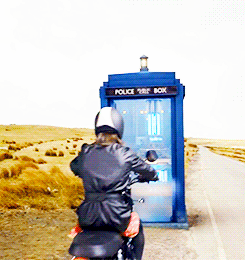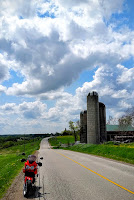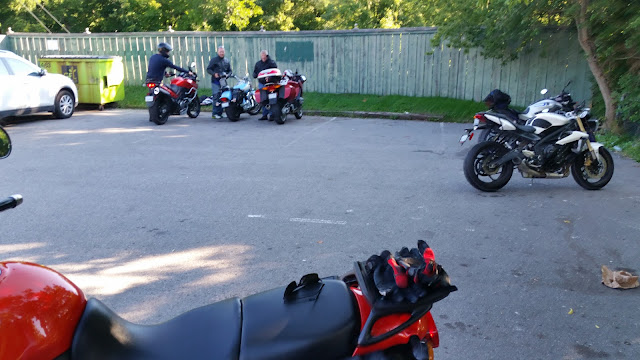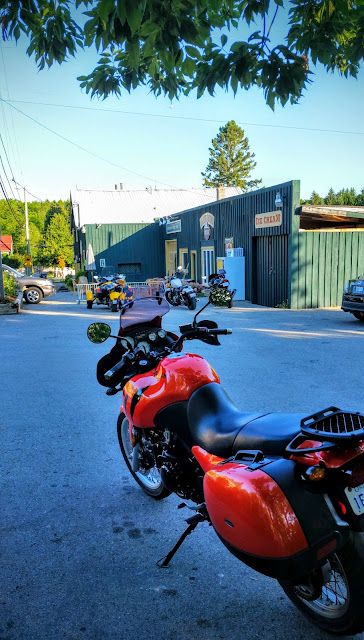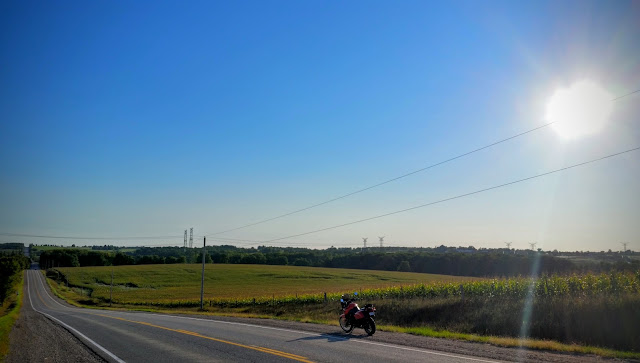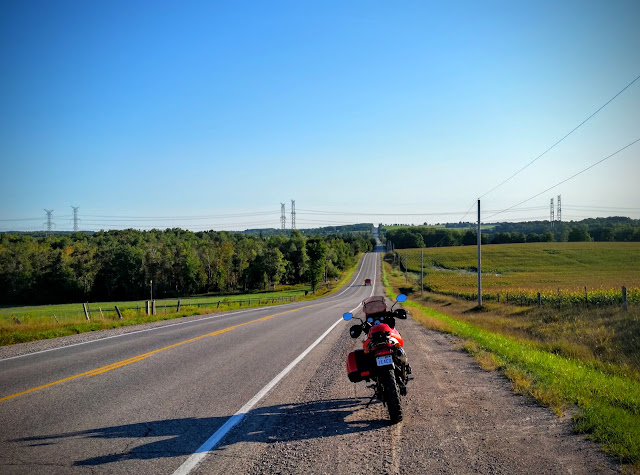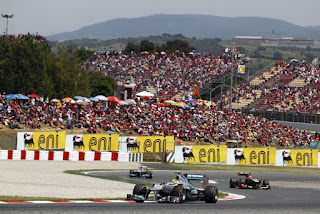 |
| Those people paid to watch very highly paid drivers parade around lap after lap and throw fits if anyone upsets the tedium. |
I just watched the Spanish Formula One Grand Prix. I used to be a huge Schumie fan and watched F1 religiously, but I’ve wandered away since I starting two wheeling. It was an historic race with Max Verstappen being the first Dutch driver and youngest ever driver to win a GP race, but it was tedious. Sky Sports’ announcers tried to rev it up with one of the few attempted passes, which was then followed up by Sebastien Vettel complaining about an attempted pass. Daniel Ricardo, the driver who attempted the pass said after the race, “I know no one tries to pass any more in Formula One, but I did, and it didn’t work.”
Having not seen a grand prix in a few years, I was surprised at how complex the wings have become. The new normal isn’t a front chin wing and a rear spoiler, it’s layers upon layers of carbon fibre. Thanks to complex 3d modelling the wings now consider wind flowing over them in all dimensions, so the wings have become these origami type pieces of industrial art. You can only imagine what it costs when one gets clipped by a wheel.
The upside of all this aerodynamic black magic are cars that can corner like they’re on rails because they have tons of carefully managed air pushing them into the pavement. The downside is all that down-force creates huge turbulence, making passing next to impossible. MotoGP doesn’t produce passing stats, but based on any criteria I can imagine passing is orders of magnitude greater in MotoGP.
MotoGP has played with aerodynamics before, but because motorcycles change their angle of attack (they lean) when they corner, it isn’t a relatively static shape that is always facing the oncoming wind blast. As a result the benefits of consistent down-force while cornering aren’t there for motorbike wings, but that isn’t stopping MotoGP from pushing deep into it this season.
The vestigial wings on MotoGP bikes don’t do much to glue the bike to the ground in corners (the main purpose of F1 wings), but they do provide some stability while under acceleration (keeping the front wheel from rising). Turning a wing sideways makes it fairly useless, so acceleration is the only place it’s facing the wind properly. Even with these modest wings, riders are complaining that the amount of turbulence coming off machines has increased, making passing more difficult. Between that and worries about wings clipping people in an off, there are obvious dynamic concerns around winglets.
Another problem with aerodynamics is that they’re incredibly expensive. You can only go so far with computer simulations before you wind up in a wind tunnel testing your designs, and wind tunnels aren’t cheap. Developing aerodynamics mean many models and constant refinement. That the end results aren’t that significant begs the question: why do it?
What I’d like to see is MotoGP ban wings. The aerodynamic costs limit other manufacturers from considering entering the fray. A strong multi-manufacturer competition is a big part of MotoGP’s success. That they create turbulence that makes following bikes unstable at speed and reduce chances of passing is another strike against them. The aesthetic argument that they turn the simplistically elegant racing motorbike into a warty toad also rings true; winglets aren’t pretty.
I love the high tech nature of Formula1, but aerodynamics have made the cars fantastically expensive with no real benefit beyond the race track. Improvements to engines, transmissions and safety have a clear connection to the evolution of automobiles in general, but massive wings and tons of down force don’t. Watching a film like Rush reminds me of a time when drivers drove. Today’s races are more like a Moon shot, and the drivers astronauts. In the last race Hamilton couldn’t compete because he couldn’t get his car to reboot, and Vettel is probably still upset that his carbon fibre wings might have been touched. If I wanted to watch people who can’t work computers I’d go to work, I hardly want to watch it in an F1 race. If I wanted to watch people worried about how perfect their cars looked, I’d go to a concour d’elegance.
A Formula 1 with physically smaller cars and reasonable down-force limits could still explore the technical boundaries of driving on four wheels while encouraging something that looks less like a parade lap and more like racing. Without the wings dripping off them and huge turbulence, passing could become a part of an F1 race again, perhaps so much so that drivers don’t complain about a single attempted pass. If F1 wanted to explore a more functional aspect of aerodynamics they should limit the massive wings but allow small, adaptive aerodynamics. That’s something that would once again be relevant to the evolution of the automobile.
I can only hope MotoGP doesn’t follow F1 down this evolutionary dead end of aerodynamic inflation. A bike festooned with wings wouldn’t just be ugly, it would be irrelevant.
 |
| Can you imagine if the wings knocked each other, or got locked together? I like my bike racing frenetic, fast and side by side. |
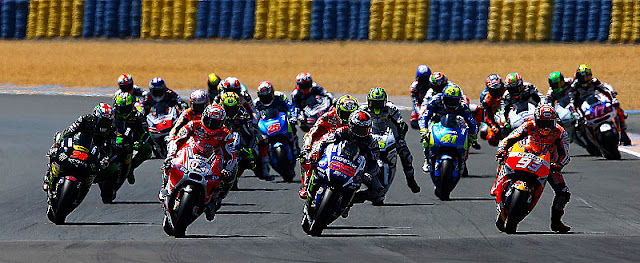 |
| Four abreast heading into the first corner? The beginning of another frantic pass-fest in MotoGP. |



 Being an English immigrant to Canada in the ’70s, I’ve brought my childhood
Being an English immigrant to Canada in the ’70s, I’ve brought my childhood 






